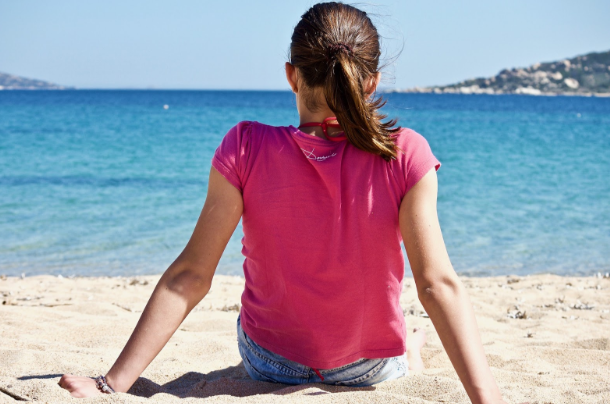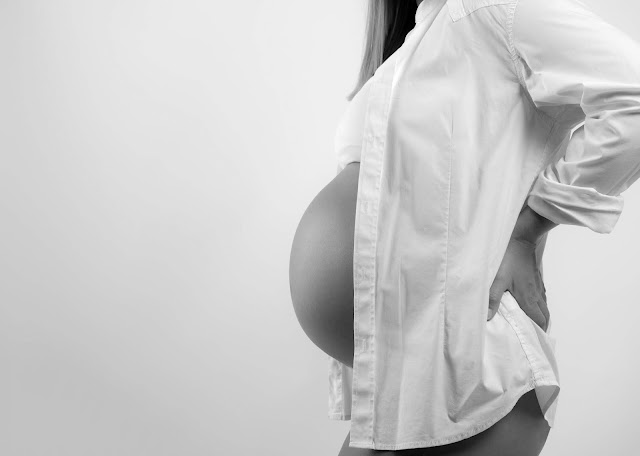Teen Acne
Acne is a skin condition wherein the hair follicles become plugged with oil and dead skin cells, and may appear as blackheads, whiteheads, pimples, pustules, and cysts. It usually appears on the face, forehead, chest, upper back, and shoulders and is most common in teenagers, hence the term teen acne. But it can affect people of any age. It is usually not a serious health threat but, if untreated, can cause acne scars.
Acne severity may range from mild to moderate to severe. Mild acne involves fewer than 30 lesions and may be treated successfully with home remedies or over-the-counter medications. Moderate acne involves anywhere from 30 to 125 lesions while severe acne may involve the same count as moderate acne but with accompanying swelling and redness and can often leave scars. It is highly recommended that moderate to severe acne be treated by qualified dermatologists to prevent acne scars.
In the past, most parents and even doctors have focused mainly on the physical aspect of acne. The emphasis was placed solely on how to manage the lesions and how to prevent scarring. The emotional toll that acne takes on a teenager was often overlooked. Many studies have shown that teen acne can result in loss of self-esteem and self-confidence, poor body image and social withdrawal, depression, anger, and frustration. It is, therefore, equally important that teenagers be guided as to how to cope with a condition that, hopefully, will be just a phase in their journey into adulthood.
Causes of Acne
Acne happens because of the combination of 4 elements: excessive oil production, hair follicles clogged by oil and dead skin cells, bacteria and excessive activity of a certain type of hormone.
The excessive activity of the hormone androgen in boys and estrogen in girls causes an increase in oil or sebum production which in turn blocks the hair follicles causing an overgrowth of the bacteria Propionibacterium acnes resulting in acne.
If the pore clogs, closes and bulges, whiteheads are formed. If the pore clogs, stays open and turns black due to exposure to air, they become blackheads. If the clogged pore becomes inflamed or infected, a pimple forms. Pustules form when bacteria grow in the blocked pores and cysts form when the blockage produces large, painful lumps beneath the skin surface.
Puberty is the series of changes that starts between ages 8 and 13 in girls, and ages 9 and 15 in boys, signifying the transition from kid to adult. As was mentioned before, the increase in hormone levels during puberty is what triggers the oil glands to grow and produce more oil or sebum leading up to acne.
Hormone changes during pregnancy and menstruation and even when using birth control pills can also cause acne breakouts.
Studies have widely shown that heredity is a major factor in the occurrence of acne. It does not necessarily mean, however, that acne is handed down from parent to child directly. What is apparent is that some families may have a hereditary tendency to overproduce dead skin cells, while some families may have a genetic tendency to overproduce sebum, both of which may lead to acne breakouts.
Diet is still widely debated as a cause of acne. Certain types of food, such as skim milk and carbohydrate-rich food like bread and chips have been found to worsen acne. Even chocolate has pinpointed as a culprit. The belief that greasy foods can cause acne has long been debunked. What some studies have shown is that a diet rich in omega-3 fatty acids, less dairy and fewer foods with a high glycemic index may reduce or lessen acne breakouts.
Hygiene, or the lack of it, has been proven to cause acne. Aside from the excess oil and dead skin cells on the skin, dirt and make-up can contribute greatly in clogging the pores of the skin. Removing them by gently washing the face before going to sleep can help maintain an acne-free skin.
Recent studies have also shown that, apart from these factors, one aspect that positively causes acne is stress. Many teens have reported having a new crop of pimples on the first day of school, during exams or right before a big date.
Additionally, certain medications can also cause acne. Antiepileptics or anticonvulsants, antituberculosis drugs, antidepressants, ciclosporin – a drug used to treat eczema and dermatitis, azathioprine – a drug used to treat systemic lupus, quinine – used to treat malaria, thiourea, and thiouracil – thyroid medications, and even vitamins B6, B12, and cyanocobalamin can cause acne.
Symptoms of Acne
Acne presents as bumps on the skin that may vary from red to dark red to greenish, and even brownish or blackish discolorations.
Whiteheads are clogged pores that look like tiny white bumps on the skin without any obvious openings. They usually develop in the oily parts of the face like the nose, chin, and forehead, also known as the T-zone.
Blackheads are clogged pores that look like black spots on the skin, the black spot being the opening that caused it to be exposed to air causing the discoloration.
Whiteheads and blackheads are also called non-inflamed acne because they are usually seen only as bumps on the skin and are usually not painful. They will just make the skin feel rough, like sandpaper.
Pimples are persistent, recurrent red spots or swelling on the skin, and can be differentiated into papules, which may be seen as small or large red bumps that may feel tender or sore; and pustules, which manifest as small or large red bumps that have a white tip in the center which is a sign of the presence of pus.
Cystic acne is the most serious form of acne. It is a soft, fluid-filled painful lump that occurs deep beneath the skin surface. It is usually found on the chin and jaws. Of all the types of acne, this one is the hardest to treat and takes the longest time to respond to treatment.
Papules, pustules and cystic acne can not only be swollen and painful but can ooze, crust or scab over and leave unwanted scars if not treated properly.
Incidence of Acne
Acne is estimated to affect 9.4% of the global population. It is the eighth most common disease worldwideand the most common skin condition in the United States, affecting 50 million Americans every year.
It usually begins in puberty and affects many adolescents and young adults, but it often disappears when a person goes into their 20s. Approximately 85% of people between the ages of 12 and 24 experience minor acne, while the remaining 15% suffer from moderate to severe acne.
Girls usually experience acne earlier than boys, with some as young as 8-9 years old and peaks at between 14-17 years old. Boys’ acne generally peaks at ages 16-19.
Girls are usually more affected than boys because of the monthly hormonal changes during menstruation. But boys tend to be affected by the more severe forms of acne than girls.
The incidence of acne persisting into their 30s, 40s and beyond is also higher in girls than in boys, with an estimated 5% among girls against just 1% among boys.
Some people do not experience acne during puberty but can suddenly manifest acne breakouts in their adulthood. This is called adult-onset acne and is also more common in women than in men. Factors such as menstruation, pregnancy, and menopause have been known to cause this, again due to the hormonal fluctuations during these times.
It is also important to note that acne breakouts during one’s adulthood may be just a symptom of an underlying yet more serious disease and should be checked out as soon as possible.
Treatment of acne
Many treatments are available for acne. But one does not need to rush out at once and buy the most expensive thing you see for just a few pimples. Some items that are already in the kitchen pantry at home can work wonders for mild acne.
Apple cider vinegar has anti-bacterial and anti-inflammatory properties that when diluted with water will make a very good astringent.
Honey and cinnamon, mixed together to make a paste and applied as a mask, are excellent sources of antioxidants.
Green tea is also known for its antioxidant content that can reduce sebum and fight inflammation when applied on the skin as a spritz.
Aloe vera can also be a good anti-acne treatment because it contains salicylic acid and sulphur. It can also help heal wounds, treat burns and fight inflammation, and is a good moisturizer, as well.
Tea tree oil, when diluted properly, can be very effective at spot treating acne.
Virgin coconut oil contains anti-bacterial and anti-inflammatory compounds that can destroy acne-causing bacteria and speed up healing of open acne sores.
Over-the-counter medications are also as varied as the home remedies for acne. Several skin compounds that are effective anti-acne treatment include benzoyl peroxide, azelaic acid, glycolic acid, lactic acid, retinoids, and salicylic acid. These compounds are available in the market as cleansers, toners, lotions, creams, and gels.
It is a good idea to create a 3-step skin care routine that will combine a cleanser to wash the face and remove surface dirt, a toner or astringent to remove deeply embedded dirt or make-up, and either a lotion, cream or gel to moisturise the skin and treat acne at the same time.
Topical prescription anti-acne drugs are usually given in moderate to severe forms of acne. Benzoyl peroxide, salicylic acid, azelaic acid, and retinoids are also the main ingredients of these drugs but in a higher concentration. They are available in creams, lotions or gels and applied directly on the affected areas as often as will be directed by the doctor. Topical antibiotics such as clindamycin and erythromycin, together with benzoyl peroxide are also proven to treat acne.
Oral medications, or those that should be taken by mouth, include antibiotics like minocycline or doxycycline. They are best used in combination with topical retinoids or benzoyl peroxide. Antibiotics, however, should be used in the shortest time possible to reduce the risk of developing antibiotic resistance.
Combined oral contraceptives that contain estrogen and progestin have been approved by the FDA as acne treatment, but possible side effects of this type of therapy may include weight gain, breast tenderness, nausea and even a slight increase in the risk of blood clots so caution should be expressly taken.
Isotretinoin is a potent drug for people whose acne does not respond to the other treatments. It is extremely effective but doctors closely monitor anyone taking this drug due to its potential side effects. These include ulcerative colitis, increased risk of depression and suicide and severe birth defects. People taking this drug are required to participate in an FDA-approved risk management program.
Prevention
Washing your face properly is crucial. You need to remove excess oil, dirt, and sweat every day, but washing more than twice a day may do more harm than good. Frequent washing may make your skin dry making it more prone to more breakouts of acne. Use a gentle, alcohol-free cleanser with warm, not hot, water. Do not use a washcloth, your fingers should do the job perfectly.
Apply a toner or astringent after washing to help remove traces of dirt, oil, sweat, and make-up that your cleanser may have missed. One that contains either benzoyl peroxide or salicylic acid are suggested.
Moisturize your skin thoroughly. Having dry skin may leave you with rough, flaky red patches. Look for a moisturizer that is oil-free or non-comedogenic. They are relatively easy to find and you can rest assured that your pores will be clog-free. Don’t forget the SPF—you also need to protect your skin from the sun and moisturizers with sunscreens are your best bet.



Comments
Post a Comment